Coffee Basics
12 Steps To Perfect Espresso: A Guide
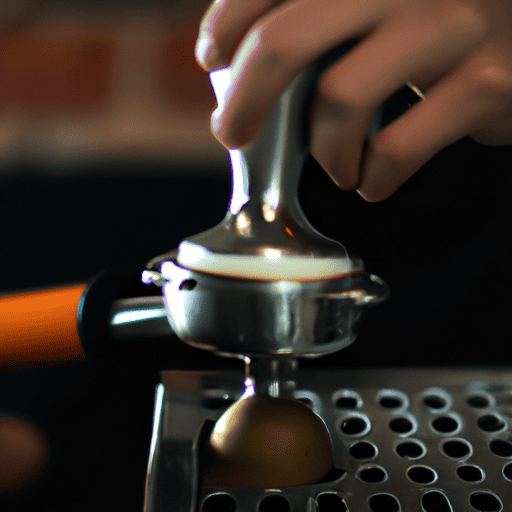
As a passionate espresso enthusiast, I recognize the significance of consistently achieving the perfect shot. Crafting a superb espresso is a meticulous art that demands careful attention to every aspect. The quality of the beans and the temperature of the water are just a few examples of the critical factors that contribute to the final outcome.
That’s why I’ve put together this guide to help you master the art of making the perfect espresso. In this 12-step guide, we’ll cover everything you need to know to make the perfect shot of espresso. From selecting the right equipment to preparing your coffee and tamping and grinding, we’ll take you through each step in detail.
With our expert tips and tricks, you’ll be well on your way to becoming an espresso master in no time. So, grab your favorite beans and let’s get started on the path to perfect espresso.
Key Takeaways
- Achieving the perfect shot of espresso requires precise attention to detail and consistency in every step of the process, from selecting high-quality beans to using filtered water and a conical burr grinder to achieve a fine, even grind.
- Tamping and grinding are crucial steps that require even pressure and consistent grind size to create a compact puck that will extract properly.
- Understanding the chemistry of espresso extraction, including timing and temperature, is essential for adjusting the brewing process and producing a consistently perfect shot.
- Experimentation may be needed to adjust grind size or tamping pressure, but with practice and attention to detail, anyone can master the art of brewing the perfect espresso shot.
Necessary Equipment
I need to make sure I have all the necessary equipment before attempting to make the perfect espresso.
The two most important pieces of equipment are the espresso machine and the burr grinder. I must have a conical burr grinder in order to grind the coffee beans to a fine consistency. This is important because the grind size affects the overall taste of the espresso. The burr grinder ensures that the coffee is ground evenly, which is essential for a delicious shot.
The espresso machine is the other crucial piece of equipment. I’ll need to flush the machine with water before making the espresso to ensure that the water is clean and free of any impurities. Additionally, I’ll need a portafilter to hold the coffee grounds and a measuring tool to ensure that I’m using the correct amount of coffee.
With these tools, I’ll be well-equipped to follow the tips for making the perfect espresso.
Preparing the Coffee
To prepare the coffee for my shot, I begin by measuring out the appropriate amount of coffee and portafilter. Measuring accuracy is crucial in achieving the perfect espresso shot.
Next, I grind the coffee to a fine consistency using a conical burr grinder. This type of grinder ensures that the coffee is ground evenly, which is essential for a consistent and delicious shot.
Finally, I evenly tamp the grounds with 30 pounds of pressure, creating a compact puck that will allow for the water to flow evenly through the coffee.
In addition to measuring accuracy and using a high-quality grinder, the water used in making espresso is also critical. I always use filtered water to ensure that my espresso shot is not affected by any impurities in the water.
Using the right water temperature and pressure is also essential in achieving the perfect shot. By carefully following these steps, I can create a delicious and consistent espresso shot every time.
Tamping and Grinding
Achieving the ideal espresso shot requires a perfectly compact puck of evenly ground coffee, which acts as the solid foundation for a symphony of flavors to dance upon.
Tamping and grinding are two crucial steps in the process of creating this foundation. Tamping is the act of compressing the coffee grounds into the portafilter with a tamper, while grinding refers to the process of breaking down whole coffee beans into smaller, uniform particles.
Here are some tips for achieving the perfect tamp and grind:
-
Pressure control is key when tamping. Applying too much pressure can result in over-extraction, while too little pressure can lead to under-extraction. Aim for a consistent 30 pounds of pressure per tamp for optimal results.
-
Bean selection is just as important as the tamping and grinding process. Choose high-quality, fresh beans that are suited for espresso brewing. Different beans have different flavors and characteristics, so experiment with different varieties to find your perfect shot.
-
Use a quality conical burr grinder to ensure a consistent grind size. The size of the grind will affect the extraction rate and ultimately the flavor of the espresso shot. A burr grinder allows for more precise control over the grind size compared to a blade grinder.
Brewing and Timing
Brewing the perfect shot of espresso requires precise timing and attention to detail in every step of the process. Once the portafilter’s been tamped and the coffee’s been ground to the correct consistency, it’s time to start the brewing process.
First, flush the machine with water to ensure that the water in the boiler’s fresh and at the correct temperature. This’ll also help to eliminate any residual coffee grounds from previous shots.
Next, it’s time to start the extraction process. Using a timing device, begin the extraction and aim for a final product weight that matches the desired ratio of coffee to water. This may require some experimentation techniques, such as adjusting the grind size or tamping pressure.
Understanding espresso chemistry’s also key to producing a consistently perfect shot. By paying attention to variables like extraction time and temperature, you can adjust your brewing process to achieve the desired taste and texture.
With practice and attention to detail, you can master the art of brewing the perfect shot of espresso.
Frequently Asked Questions
What are some common mistakes to avoid when making espresso?
When making espresso, there are a few common mistakes that can easily lead to a less-than-perfect shot.
Firstly, it’s important to use proper tamping techniques to ensure even distribution of the coffee grounds and to prevent under or over extraction.
Secondly, choosing the right beans is crucial to achieving the desired flavor profile and strength.
Other factors to consider include the grind size, water temperature, and brew time.
With careful attention to these details, it’s possible to create a consistently excellent cup of espresso.
Can you make espresso without an espresso machine?
As the saying goes, where there’s a will, there’s a way. And for coffee lovers who don’t have access to an espresso machine, there are alternative methods for manual brewing.
While it may not produce the exact same taste and texture as a traditional espresso shot, manual brewing methods like Moka pot or AeroPress can still create a strong and flavorful coffee concentrate that can be used as a base for many espresso-based drinks.
It’s important to note, however, that these methods require a different approach to grinding and brewing to achieve the desired results. With the right equipment and technique, it’s possible to enjoy a homemade espresso-like beverage without the need of an expensive machine.
How long does it take to become proficient at making espresso?
Espresso training involves a steep learning curve that requires dedication and practice to become proficient. The time it takes to master the art of making espresso varies depending on the individual’s commitment to learning and the resources available for training.
It’s important to note that becoming skilled in making espresso requires an understanding of the chemistry behind the brewing process, as well as the technical skills involved in operating an espresso machine and grinder.
While some may become proficient in a matter of weeks, others may take months or even years to achieve the level of expertise needed to consistently produce high-quality espresso shots.
What type of water should be used for making espresso?
When making espresso, the type of water used is crucial to the quality of the final product. The two main options for water are filtered and tap water. While tap water is convenient, it often contains impurities that can negatively affect the taste of the espresso.
Filtered water, on the other hand, removes these impurities and leads to a cleaner, better-tasting shot. Another consideration is the type of water used, such as mineral or distilled water. Mineral water can add a unique flavor profile to the espresso, while distilled water lacks any mineral content and can produce a flat-tasting shot.
Therefore, it’s important to consider the quality of the water used in making espresso to achieve the perfect shot.
How does the roasting process affect the taste of espresso?
Well, well, well, let’s talk about the roasting process and its effect on the flavor profile of espresso. As a coffee aficionado, I must say that there’s no other process that can make or break the taste of your espresso shot than the roasting process.
You see, the roasting process is where all the magic happens. The chemical reactions that occur during this process are what give coffee its unique flavor and aroma. The longer the roasting time, the darker the beans become, and the more bitter and smoky the flavor profile will be.
On the other hand, shorter roasting times will result in a lighter roast with fruity and floral notes. It’s all about finding the perfect balance of roasting time to achieve the desired flavor profile. So, if you want to make the perfect espresso shot, you need to pay close attention to the roasting process and experiment with different roasting times to find the sweet spot.
Conclusion
In conclusion, making the perfect espresso isn’t an easy task. It requires precision, attention to detail, and a deep understanding of the equipment and the process. But with the right tools and techniques, anyone can become an espresso master.
I remember the first time I tried to make espresso at home. I followed the steps and used the right equipment, but the result wasn’t what I expected. It was bitter, over-extracted, and lacked the complexity and richness of a good espresso shot. But I didn’t give up.
I kept experimenting, adjusting my techniques, and learning from my mistakes. And with time, I was able to achieve the perfect shot. Like a musician who practices every day to master their instrument, making espresso requires practice, patience, and dedication.
But the reward is worth the effort. A perfectly brewed espresso shot is a work of art, a symphony of flavors and aromas that awaken the senses and lift the spirit. So don’t be afraid to try, to fail, and to learn.
With these 12 steps, you have all the tools you need to start your journey towards the perfect shot. Happy brewing!
Arf, an author and an innovative enthusiast of coffee, coffee alternatives, and tea, plays a crucial role as a contributor to the esteemed Cappuccino Oracle platform. Renowned for his curiosity and passion for these captivating beverages, Arf has carved out a unique space for himself in the world of exploration and writing. He realized that coffee, coffee alternatives, and tea are not mere drinks to keep one awake, but universes of flavors and stories waiting to be explored.
Arf’s articles for Cappuccino Oracle blend meticulous research with personal experiences, providing readers with an in-depth understanding of various types of coffee, coffee alternatives, and tea, along with their unique characteristics, cultures, and histories. His honest reviews and engaging narratives guide readers on their own journeys, helping them discover their preferences and find their perfect brew.
Coffee Basics
How Many Carbs Does Coffee Have

Welcome to our coffee and carbohydrates guide. Have you ever thought about how many carbohydrates are in your morning coffee? We have all the information you need!
In this article, we’ll delve into the basics of coffee and its carbohydrate content. From how carbs are added to different coffee varieties to the impact of additives and sweeteners, we’ll provide you with the information you need to make informed choices.
So sit back, grab a mug, and let’s explore the world of coffee carbs together.
Key Takeaways
- Regular black coffee and decaffeinated coffee have minimal carbs and can be considered low-carb options.
- The addition of ingredients like sugar, flavored syrups, and milk can significantly increase the carb content of coffee.
- Different coffee varieties have varying carb contents, with black coffee and espresso having the lowest carb counts.
- Choosing low-carb alternatives such as unsweetened milk alternatives and low-carb sweeteners can help minimize the carb content of coffee.
Coffee and Carbohydrates: Understanding the Basics
We will explore the basics of coffee and carbohydrates, starting with the number of carbs found in coffee.

When it comes to carbs, coffee is naturally low in calories and carbohydrates. In fact, a regular cup of black coffee contains almost zero carbs. This makes it a great choice for those looking to limit their carbohydrate intake. Even decaffeinated coffee has very minimal carbs, making it a suitable option for those who prefer to avoid caffeine.
Moreover, black coffee offers several health benefits. It’s rich in antioxidants, which can help protect against chronic diseases like heart disease and type 2 diabetes. Additionally, black coffee can boost metabolism and improve mental focus.
How Carbs Are Added to Coffee
Carbs are typically added to coffee during the brewing process, using ingredients such as sugar, flavored syrups, or milk. These additions not only enhance the taste but also contribute to the overall carbohydrate content of the beverage.
When it comes to sugar, it’s important to note that it’s a simple carbohydrate that’s quickly absorbed by the body. Flavored syrups, on the other hand, may contain varying amounts of carbohydrates depending on the brand and flavor. Milk, particularly whole milk, contains lactose, a natural sugar that adds carbs to your coffee.

It’s worth mentioning that the roasting process of coffee beans doesn’t significantly impact the carbohydrate content.
Now, let’s explore popular coffee varieties and their carb content.
Popular Coffee Varieties and Their Carb Content
As we continue exploring the impact of different ingredients on the carbohydrate content of coffee, let’s delve into the carb content of popular coffee varieties.
Here are four coffee varieties and their carb content:
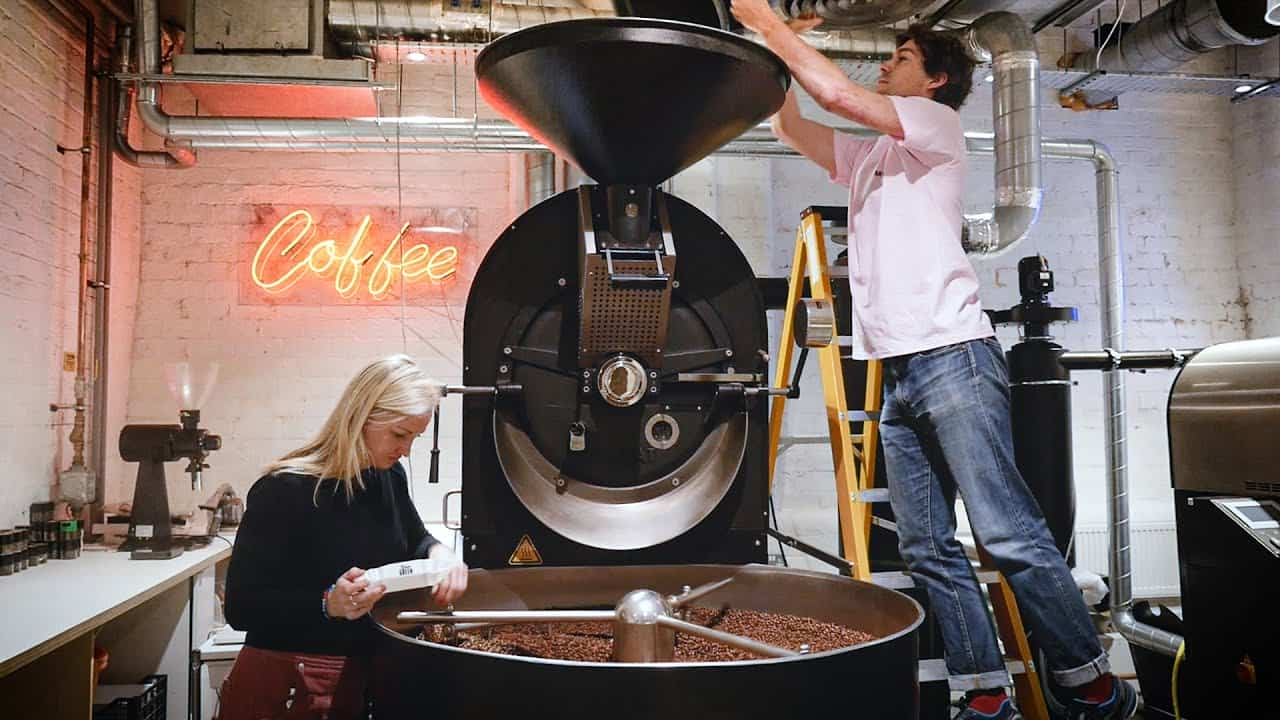
- Black Coffee: Black coffee is a zero-carb beverage, making it a great choice for those watching their carb intake. It’s also known for its potential health benefits, such as improved cognitive function and a reduced risk of developing type 2 diabetes.
- Espresso: Espresso is another low-carb option, containing only about 1 gram of carbs per serving. This concentrated form of coffee is often consumed as a shot or used as a base for various coffee drinks.
- Americano: Americano is made by diluting espresso with hot water, resulting in a slightly higher carb content than espresso. However, it still remains relatively low in carbs compared to other coffee beverages.
- Flavored Coffees: Flavored coffees, such as vanilla or caramel, may contain added sugars and syrups, which can significantly increase their carb content. It’s important to check the nutrition label or ask your barista for the exact carb count when choosing flavored coffees.
The Impact of Additives and Sweeteners on Carb Count
When it comes to the carb count of coffee, the impact of additives and sweeteners can significantly alter the overall carbohydrate content.
Artificial sweeteners play a role in determining the carb count of coffee. These low-calorie sugar substitutes are often used to add sweetness without adding carbs. However, it’s important to note that some artificial sweeteners may have a small number of carbs due to fillers or bulking agents.
Additionally, the effect of milk and creamers on coffee’s carbohydrate content should also be considered. Milk and creamers can contribute to the carb count of coffee, especially if they contain added sugars or flavorings.
Opting for unsweetened varieties or using low-carb alternatives can help minimize the carb content of coffee when using these additives.
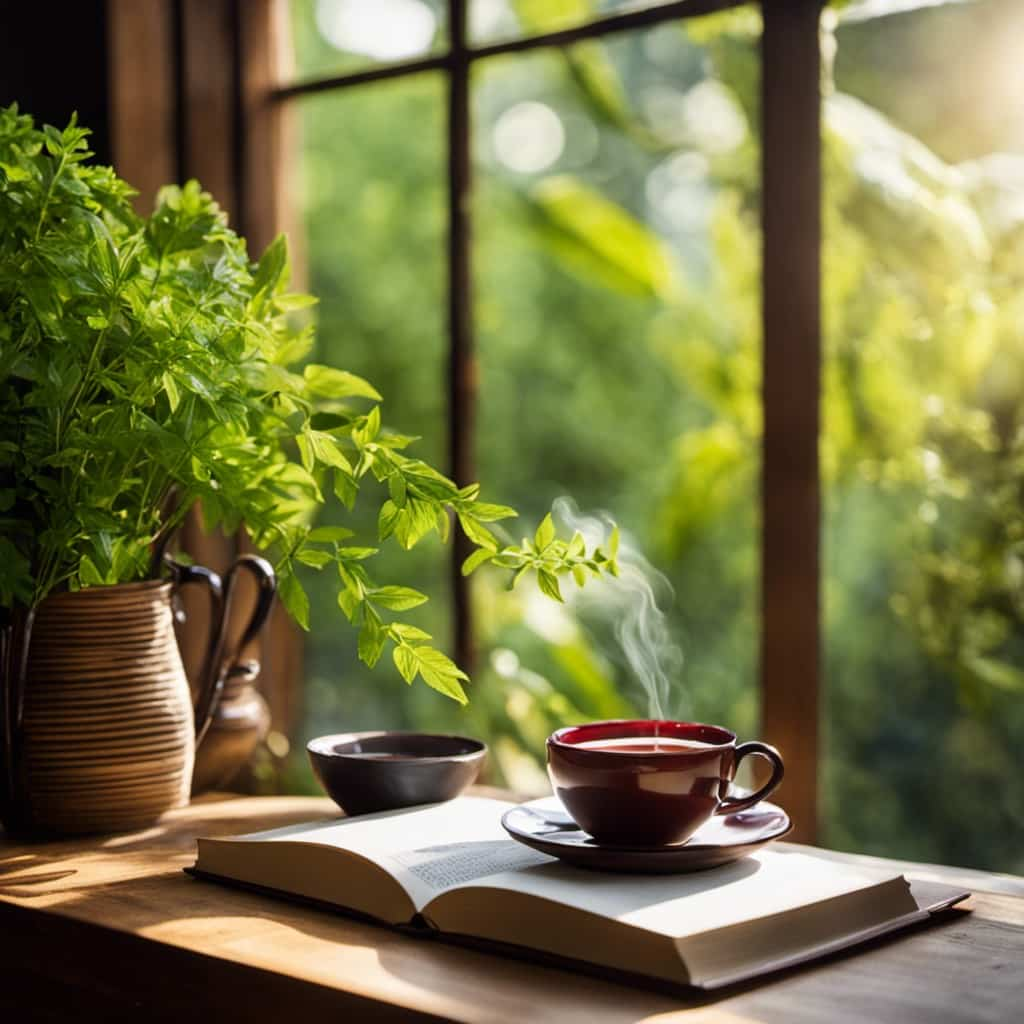
Tips for Enjoying Low-Carb Coffee Options
To enjoy low-carb coffee options, we recommend exploring alternative sweeteners and milk choices. Here are some tips to help you make your coffee low in carbs:
- Opt for carb-free coffee alternatives: If you want to reduce your carb intake, consider swapping your regular coffee for carb-free options like black coffee, cold brew, or unsweetened iced coffee.
- Choose low-carb sweeteners for coffee: Instead of traditional sugar, try using low-carb sweeteners like stevia, erythritol, or monk fruit extract. These sweeteners provide the sweetness you crave without adding unnecessary carbs.
- Use unsweetened milk alternatives: Regular milk can have a significant amount of carbs. Instead, try unsweetened almond milk, coconut milk, or cashew milk. These options are lower in carbs and can still give your coffee a creamy texture.
- Experiment with flavored extracts: If you enjoy flavored coffee, try using sugar-free flavored extracts like vanilla, hazelnut, or caramel. They can add a burst of flavor without the added carbs.
Frequently Asked Questions
Does the Type of Coffee Bean Affect the Carbohydrate Content?
The type of coffee bean does affect the carbohydrate content. Decaffeinated coffee generally has less carbs than regular coffee. Additionally, the origin of the coffee bean can also impact the carb content.
Can Brewing Methods Affect the Carb Count in Coffee?
When it comes to brewing methods, does the time we steep our coffee or the temperature of the water used affect the carb count? These factors can indeed impact the carbohydrate content in our beloved cup of joe.
Are There Any Coffee Additives That Can Actually Reduce the Carb Count?
Low carb sweeteners and alternative milk options can potentially reduce the carb count in coffee. By using these additives, we can enjoy a delicious cup of coffee without worrying about consuming excessive carbs.

How Does the Roasting Process Affect the Carbohydrate Content in Coffee?
The roasting process affects the carbohydrate content in coffee. The effect of temperature on carbohydrates in coffee can lead to a reduction in carbs. Additionally, the way coffee is stored can also impact its carbohydrate content.
Can the Processing Method of Instant Coffee Affect Its Carb Content?
The processing method of instant coffee can impact its carb content. For example, if the coffee beans are heavily processed and additives are used, the carbohydrate content may be higher compared to other brewing methods.
Conclusion
In conclusion, while coffee itself is virtually carb-free, the carb content can increase depending on the additives and sweeteners used. For example, a medium-sized cup of black coffee contains only around 2 calories and less than 1 gram of carbohydrates.
However, adding cream and sugar can significantly increase the carb count. It’s interesting to note that a typical serving of a popular flavored coffee drink can contain up to 50 grams of carbs, which is equivalent to approximately 12 teaspoons of sugar.

Justin is a seasoned author, coffee and tea enthusiast, and an essential member of the Cappuccino Oracle team. With a keen appreciation for the complexities of coffee, coffee alternatives, and tea, Justin has dedicated his professional career to exploring these realms and sharing his insights with readers worldwide.
Justin’s immersion in the world of coffee, coffee alternatives, and tea began at a young age, kindling a passion that extended beyond mere consumption. This love for these beverages led him to combine his talent for writing with his devotion to coffee and tea, bringing him to Cappuccino Oracle as a dedicated author.
Coffee Basics
How Long Do You Steep Coffee in French Press

Have you ever thought about how long it takes to brew the perfect cup of coffee in a French press? Allow us to share our knowledge with you.
With various factors affecting the steeping time, such as coffee type and personal taste, finding the right balance can be a bit of a trial and error process. But fear not, because in this article, we will guide you through the dos and don’ts of steeping coffee in a French press, ensuring a flavorful and satisfying cup every time.
Key Takeaways
- The steeping time for coffee in a French press depends on factors such as the coffee grounds to water ratio, grind size, and water temperature.
- Recommended steeping times for different coffee types vary, with medium to dark roast requiring 4-5 minutes and light roast needing 3-4 minutes.
- Adjusting the steeping time allows you to control the flavor intensity of your coffee, by experimenting with grind size and water temperature.
- When using a French press, common mistakes to avoid include grinding the coffee beans too finely, using water that’s too hot, and oversteeping the coffee. Aim for about 4 minutes of steeping time.
Factors Affecting Steeping Time
One of the key factors that impact the steeping time in a French Press is the ratio of coffee grounds to water. The amount of coffee grounds used will determine the flavor and strength of the resulting brew. If you prefer a stronger cup of coffee, you can increase the amount of coffee grounds, while a milder cup can be achieved by using less.
Additionally, the size of the coffee grind also affects the steeping time. Finely ground coffee will extract more quickly, resulting in a shorter steeping time, whereas coarsely ground coffee will require a longer steeping time for optimal flavor extraction.
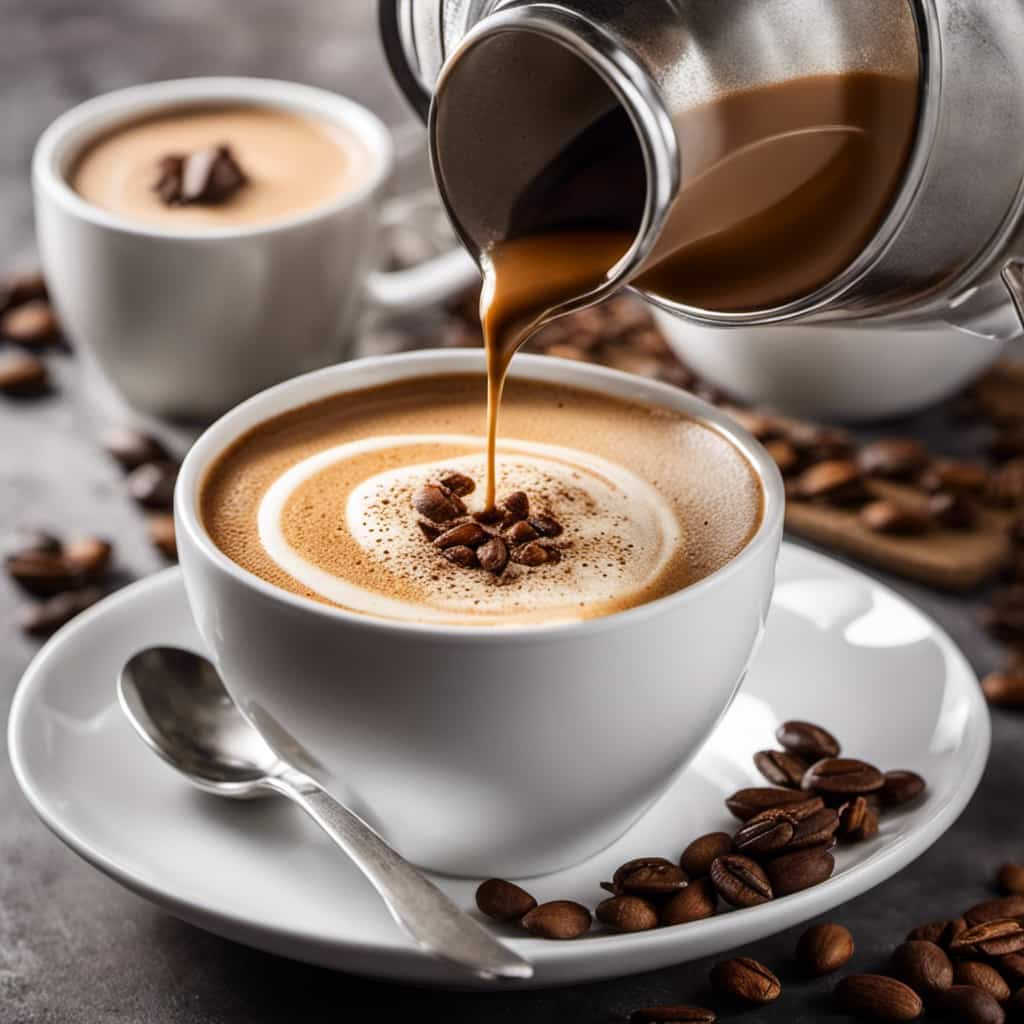
Another important factor to consider is the impact of water temperature on steeping time. The ideal water temperature for a French Press is around 195-205°F (90-96°C). If the water is too hot, it can over-extract the coffee and result in a bitter taste. On the other hand, if the water is too cold, it may under-extract the coffee and result in a weak and flavorless brew.
Now that we understand the factors affecting steeping time, let’s move on to the next section where we’ll discuss recommended steeping times for different coffee types.
Recommended Steeping Times for Different Coffee Types
Now let’s discuss the recommended steeping times for different coffee types in a French Press.
When it comes to brewing techniques, the steeping time plays a crucial role in extracting the desired flavors from your coffee grounds. For a medium to dark roast, a steeping time of 4-5 minutes is generally recommended. This allows the flavors to fully develop without over-extraction.

On the other hand, if you prefer a lighter roast, a shorter steeping time of 3-4 minutes is ideal to avoid any bitter taste. It’s important to note that the coffee grind size also affects the steeping time. A coarser grind will require a longer steeping time, while a finer grind will require a shorter one.
Tips for Adjusting Steeping Time to Your Taste
To adjust the steeping time to your taste, we recommend experimenting with different durations while keeping in mind the desired flavors from the previous subtopic. There are two key factors that can greatly impact the taste of your coffee: the grind size and the water temperature.
Experimenting with grind size allows you to control the extraction process. Finer grinds will result in a stronger and more intense flavor, while coarser grinds will produce a milder taste. Adjusting the grind size can help you find the perfect balance for your palate.
Understanding water temperature is also crucial. Hotter water will extract more flavors from the coffee, but it can also lead to a more bitter brew. Cooler water, on the other hand, may result in a weaker and under-extracted cup. Finding the right water temperature for your taste preferences is essential.
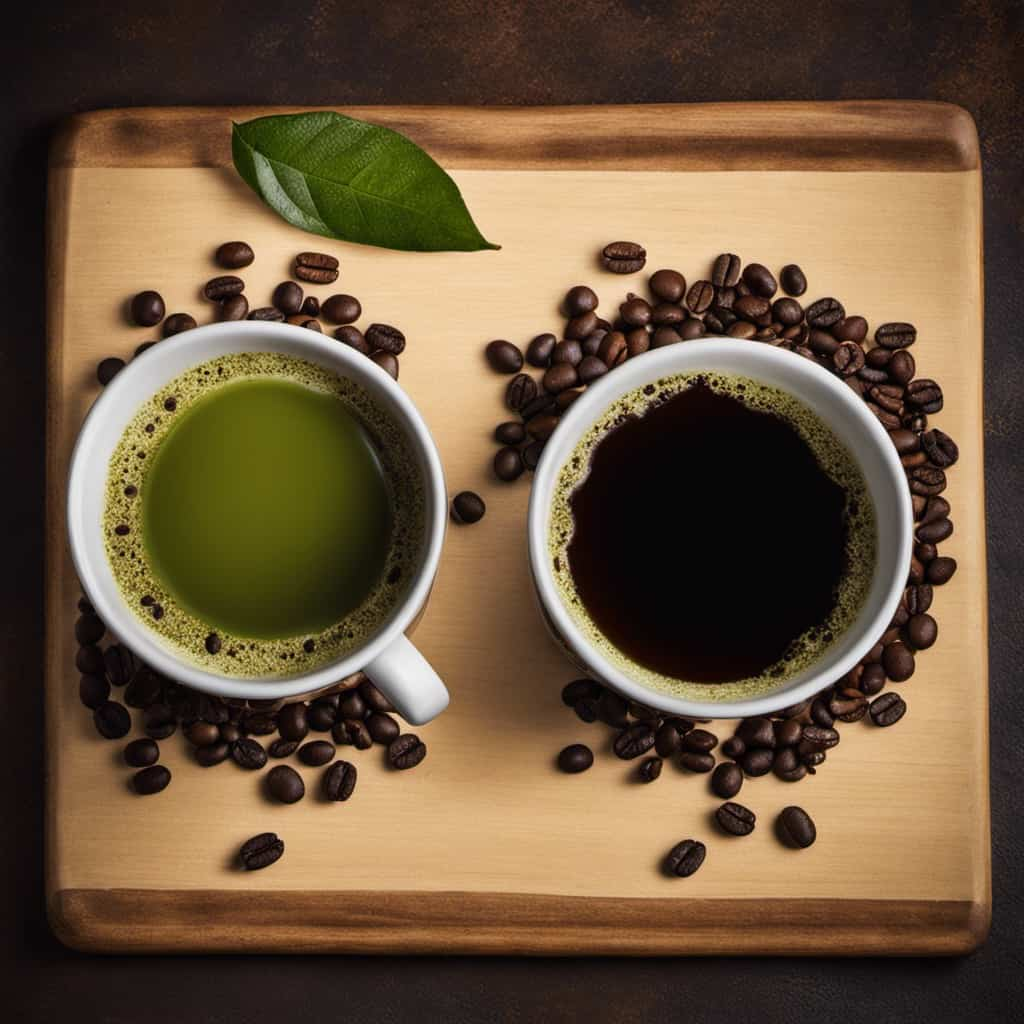
To summarize, adjusting the steeping time to your taste requires experimentation with grind size and water temperature. By playing around with these variables, you can discover the perfect combination that suits your preferences.
| Grind Size | Water Temperature | Steeping Time (minutes) |
|---|---|---|
| Fine | Hot | 4-5 |
| Medium | Hot | 3-4 |
| Coarse | Hot | 2-3 |
| Coarse | Warm | 4-5 |
Common Mistakes to Avoid When Steeping Coffee in a French Press
When steeping coffee in a French press, it’s important to avoid common mistakes that can negatively impact the flavor and quality of your brew.
One common mistake to avoid is grinding the coffee beans too finely. This can result in a bitter and over-extracted brew. It’s crucial to use a coarse grind to ensure proper extraction and a balanced flavor profile.
Another mistake to avoid is using water that’s too hot. Water that’s boiling or near boiling can scorch the coffee grounds, resulting in a burnt taste. It’s recommended to use water that’s around 200°F (93°C) for optimal brewing.

Finally, it’s important to avoid oversteeping the coffee. Leaving the grounds in the French press for too long can result in a bitter and unpleasant taste. It’s recommended to steep the coffee for about 4 minutes before pressing down the plunger.
Enhancing the Flavor of Your French Press Coffee
To enhance the flavor of our French press coffee, we can experiment with different brewing techniques and ratios of coffee to water. Here are three ways to enhance the flavor of your French press coffee:
- Try different coffee brewing techniques: Aside from the traditional French press method, there are alternative coffee brewing methods that can bring out unique flavors in your coffee. For example, you can try the cold brew method for a smoother and less acidic taste, or the AeroPress method for a bolder and more concentrated flavor.
- Adjust the coffee to water ratio: The ratio of coffee to water plays a crucial role in the flavor of your French press coffee. Experiment with different ratios to find your preferred strength. Generally, a ratio of 1:15 (1 part coffee to 15 parts water) is a good starting point, but feel free to adjust according to your taste preferences.
- Freshly grind your beans: Grinding your coffee beans just before brewing can significantly enhance the flavor. Invest in a good quality grinder and grind your beans to a coarse consistency for French press brewing. This ensures that you extract the optimal flavors from the coffee beans.
Frequently Asked Questions
Can I Use Pre-Ground Coffee in a French Press, or Do I Need to Grind the Beans Myself?
When using a French press, it’s always best to grind your own beans for maximum flavor. Pre-ground coffee can be used, but the grind size may impact the taste. Freshly ground coffee will provide a more satisfying and flavorful cup.
How Do I Clean a French Press Properly to Ensure the Best-Tasting Coffee?
To clean a French press properly for the best-tasting coffee, we recommend disassembling the parts and rinsing them thoroughly. Use a gentle brush to remove any residue, and ensure the brewing temperature for French press coffee is ideal.
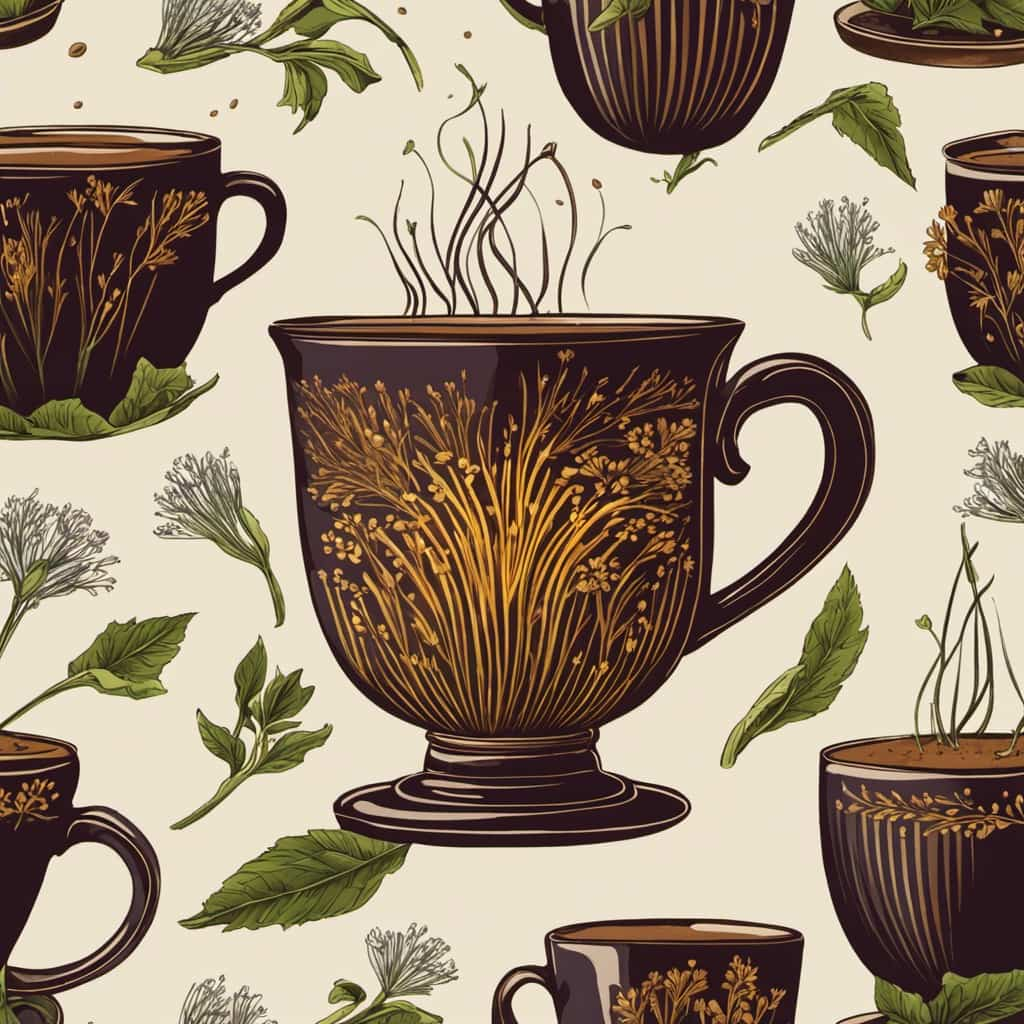
Can I Reuse the Coffee Grounds for a Second Steeping, or Is It Better to Use Fresh Grounds Each Time?
When reusing coffee grounds in a French press, it’s better to use fresh grounds each time. This ensures the best flavor and prevents over-extraction. Steeping time may vary, but aim for 4-5 minutes for optimal results.
Is It Necessary to Use Filtered Water When Brewing Coffee in a French Press?
Using filtered water when brewing coffee in a French press is not necessary, but it can greatly enhance the taste. Tap water may contain impurities that affect the flavor, whereas filtered water ensures a cleaner, more enjoyable cup of coffee.
Can I Add Milk or Cream to My French Press Coffee, or Is It Best to Drink It Black?
Adding milk or cream to French press coffee is a matter of personal preference. While some enjoy the creaminess and added flavor it brings, others prefer to drink it black to fully appreciate the rich and nuanced flavors of the coffee beans.
Conclusion
In the mystical realm of the French press, time is the alchemist that transforms mere coffee grounds into a rich elixir of flavor. With factors like grind size and coffee type influencing the steeping process, it’s crucial to find the perfect balance.
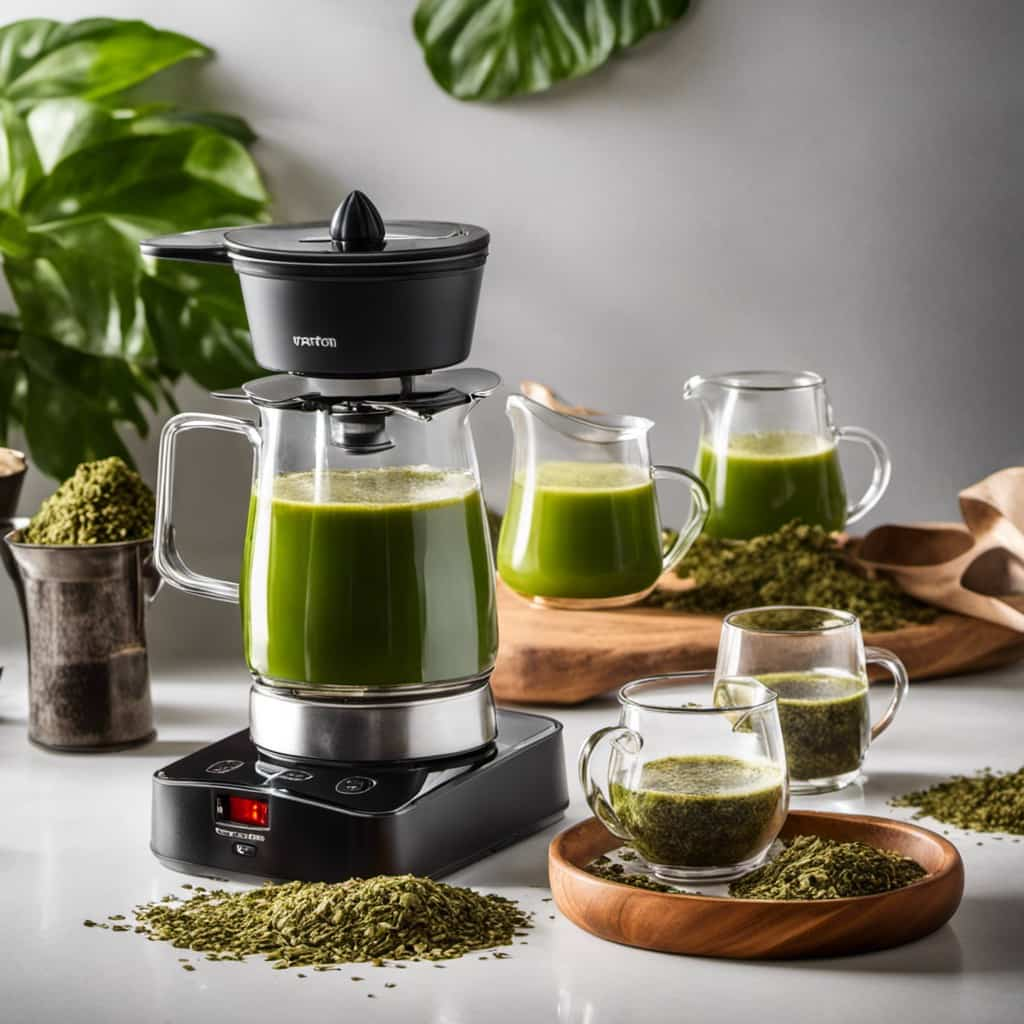
Adjusting the steeping time to your taste is an art that can elevate your coffee experience to new heights. Remember, dear coffee lover, to avoid the common pitfalls and unlock the true essence of your French press brew.
Justin is a seasoned author, coffee and tea enthusiast, and an essential member of the Cappuccino Oracle team. With a keen appreciation for the complexities of coffee, coffee alternatives, and tea, Justin has dedicated his professional career to exploring these realms and sharing his insights with readers worldwide.
Justin’s immersion in the world of coffee, coffee alternatives, and tea began at a young age, kindling a passion that extended beyond mere consumption. This love for these beverages led him to combine his talent for writing with his devotion to coffee and tea, bringing him to Cappuccino Oracle as a dedicated author.
Coffee Basics
How Is Vietnamese Coffee Made
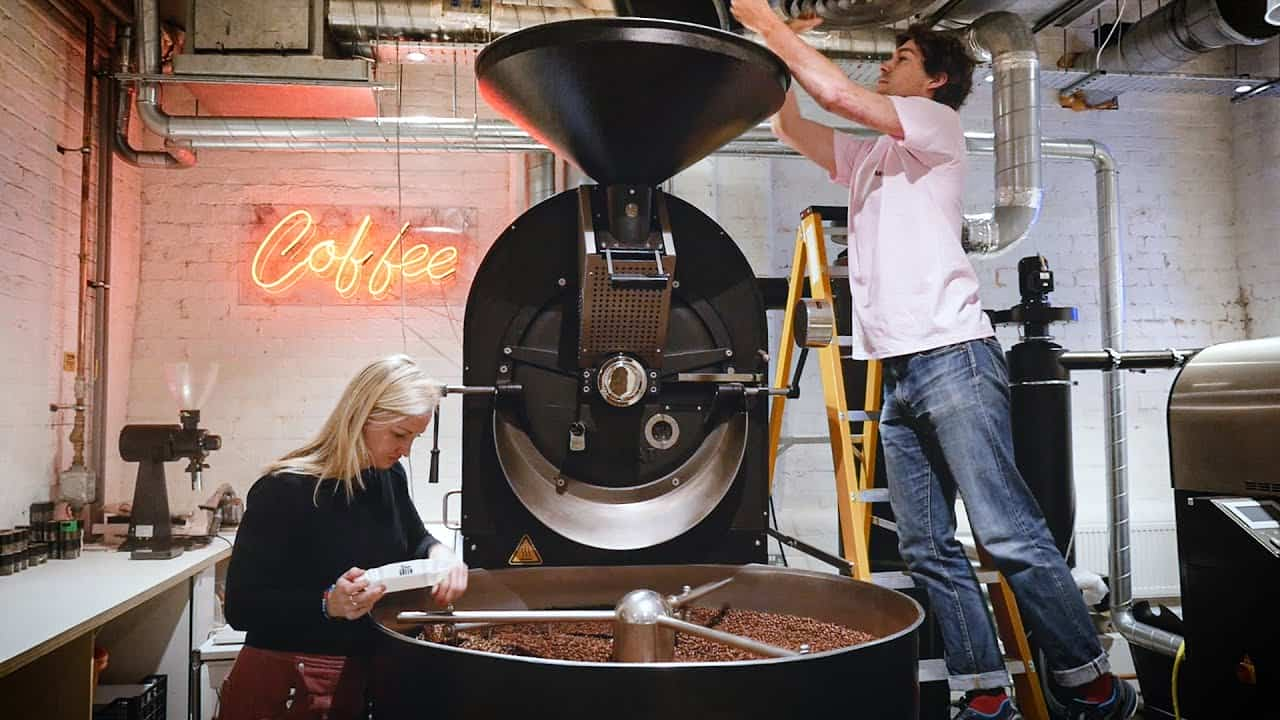
Ever wondered about the process of making Vietnamese coffee? Allow us to shed some light on it!
In this article, we’ll delve into the origins, beans, brewing method, and even the role of condensed milk in creating this delightful beverage.
So sit back, relax, and allow us to guide you through the art of making Vietnamese coffee. Get ready to experience the rich flavors and unique brewing techniques that make this coffee a true delight to serve and enjoy.
Key Takeaways
- Vietnamese coffee originated during the French colonial period in the late 19th century and blends traditional French style with local preferences.
- The most common type of beans used in Vietnamese coffee is Robusta, known for its higher caffeine content and bitter flavor.
- Vietnamese coffee is brewed using a traditional equipment called a phin, which allows for a slow extraction process and results in a rich and robust cup of coffee.
- Condensed milk is a staple in Vietnamese coffee and adds a creamy and sweet element that balances the bitterness of the coffee. Alternatives such as coconut milk or almond milk can be used as well.
The Origins of Vietnamese Coffee
Where did Vietnamese coffee originate?
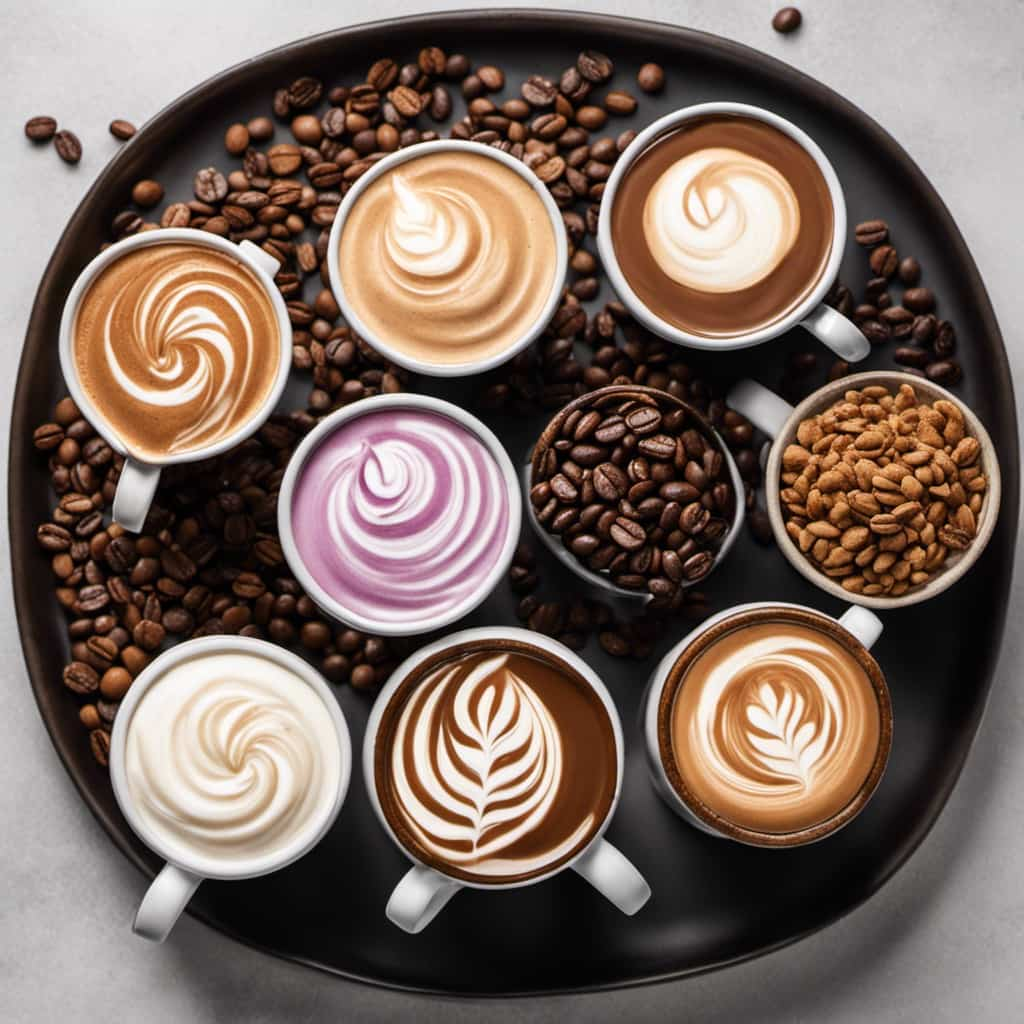
The origins of Vietnamese coffee can be traced back to the French colonial period in the late 19th century. During this time, the French introduced coffee cultivation to Vietnam, recognizing the country’s ideal climate and fertile soils for coffee production. The history of Vietnamese coffee is deeply intertwined with the French influence, as they not only brought the coffee plants but also the brewing techniques and equipment.
Over the years, Vietnamese coffee has developed its unique flavor profile and brewing methods, blending the traditional French style with local preferences. This rich history has made Vietnamese coffee a beloved beverage, known for its bold and robust flavor.
As we delve into the types of beans used in Vietnamese coffee, we’ll further explore the intricacies and nuances that make this drink so special.
Types of Beans Used in Vietnamese Coffee
To make Vietnamese coffee, we use a variety of beans that are known for their bold and robust flavor. The types of beans used in Vietnamese coffee can vary, but there are a few popular options that are commonly found in Vietnamese coffee blends:

- Robusta: This is the most common type of bean used in Vietnamese coffee. It has a higher caffeine content and a stronger, more bitter flavor compared to Arabica beans.
- Arabica: While not as commonly used as Robusta, Arabica beans are still sometimes included in Vietnamese coffee blends. They’ve a smoother, sweeter flavor and a lower caffeine content.
- Excelsa: This bean is less common but still adds a unique flavor to Vietnamese coffee. It has a fruity and tart taste.
- Catimor: This hybrid coffee bean is a cross between Caturra and Timor, and it’s known for its earthy and spicy flavor.
These different types of beans are often roasted using different techniques to bring out their distinct flavors. The beans may be roasted dark, medium, or light to achieve the desired taste profile.
The Traditional Brewing Method
For the traditional brewing method, we rely on a unique process that brings out the full flavors of the carefully selected coffee beans.
To start, we use a traditional brewing equipment called a phin, which consists of a small cup, a perforated plate, and a screw-on filter. The coffee filters, typically made of stainless steel, allow the water to slowly drip through the coffee grounds. This slow extraction process ensures that the flavors are fully extracted and that the resulting coffee is rich and robust.
The phin is placed on top of a cup, and hot water is poured over the coffee grounds. As the water slowly drips through the filter, it carries the aromatic oils and bold flavors of the coffee into the cup below.

This traditional brewing method ensures a strong and flavorful cup of Vietnamese coffee.
The Role of Condensed Milk
Condensed milk plays a crucial role in enhancing the flavor and texture of Vietnamese coffee. It adds a creamy and sweet element that perfectly complements the strong and robust taste of the coffee. Here are some reasons why condensed milk is a staple in Vietnamese coffee:
- Sweetness balance: The condensed milk adds just the right amount of sweetness to balance out the bitterness of the coffee, creating a harmonious flavor profile.
- Creaminess: The thick and creamy consistency of condensed milk gives Vietnamese coffee a smooth and velvety texture, making each sip a delight.
- Tradition: Condensed milk has been used in Vietnamese coffee for generations, and it’s an integral part of the country’s coffee culture.
- Condensed milk alternatives: For those who prefer a healthier option or have dietary restrictions, there are alternatives such as coconut milk or almond milk that can be used as substitutes without compromising the overall taste experience.
Serving and Enjoying Vietnamese Coffee
Now let’s talk about how we can serve and enjoy Vietnamese coffee, taking advantage of its unique flavor profile.
Vietnamese coffee is typically brewed using a traditional metal filter called a phin, which allows for a slow and controlled extraction process. To serve, simply place the phin on top of a cup and add the desired amount of coffee grounds. Then, pour hot water over the grounds and let it drip through the filter. The result is a rich and bold cup of coffee.

In terms of enjoying Vietnamese coffee, it’s customary to savor it slowly, appreciating its strong flavor and aroma. Vietnamese coffee is often enjoyed with a small glass of water on the side to cleanse the palate between sips. This ritual reflects the Vietnamese coffee culture, which emphasizes the art of brewing techniques and the enjoyment of the coffee experience.
Frequently Asked Questions
How Does the Taste of Vietnamese Coffee Compare to Other Types of Coffee?
When it comes to taste comparison, Vietnamese coffee stands out with its unique flavors. The combination of bold, dark-roasted beans and sweetened condensed milk creates a rich and creamy experience that sets it apart from other types of coffee.
Can I Use Any Type of Coffee Beans to Make Vietnamese Coffee?
Yes, you can use different types of coffee beans to make Vietnamese coffee. The brewing techniques used in Vietnam are versatile and can be adapted to various beans, allowing for a diverse range of flavors and profiles.
What Is the Significance of the Phin Filter in the Traditional Brewing Method?
The phin filter plays a significant role in the traditional brewing technique of Vietnamese coffee. It is a key element of Vietnamese coffee culture and adds to the rich and flavorful experience of making and serving this beloved beverage.

Are There Any Health Benefits Associated With Drinking Vietnamese Coffee?
There are potential health risks associated with excessive caffeine consumption, but Vietnamese coffee can provide some health benefits as well. It contains antioxidants and may improve cognitive function and liver health.
Can Vietnamese Coffee Be Enjoyed Cold or Is It Typically Served Hot?
Vietnamese coffee can be enjoyed both cold and hot. When served cold, it is typically made using the drip method and poured over ice. The flavor is bold and rich, offering a refreshing alternative to the traditional hot version.
Conclusion
In conclusion, Vietnamese coffee is a unique and flavorful beverage that’s enjoyed around the world.
Despite its use of condensed milk, which may be a concern for those watching their sugar intake, the traditional brewing method and the quality of the beans used make Vietnamese coffee a delightful treat.
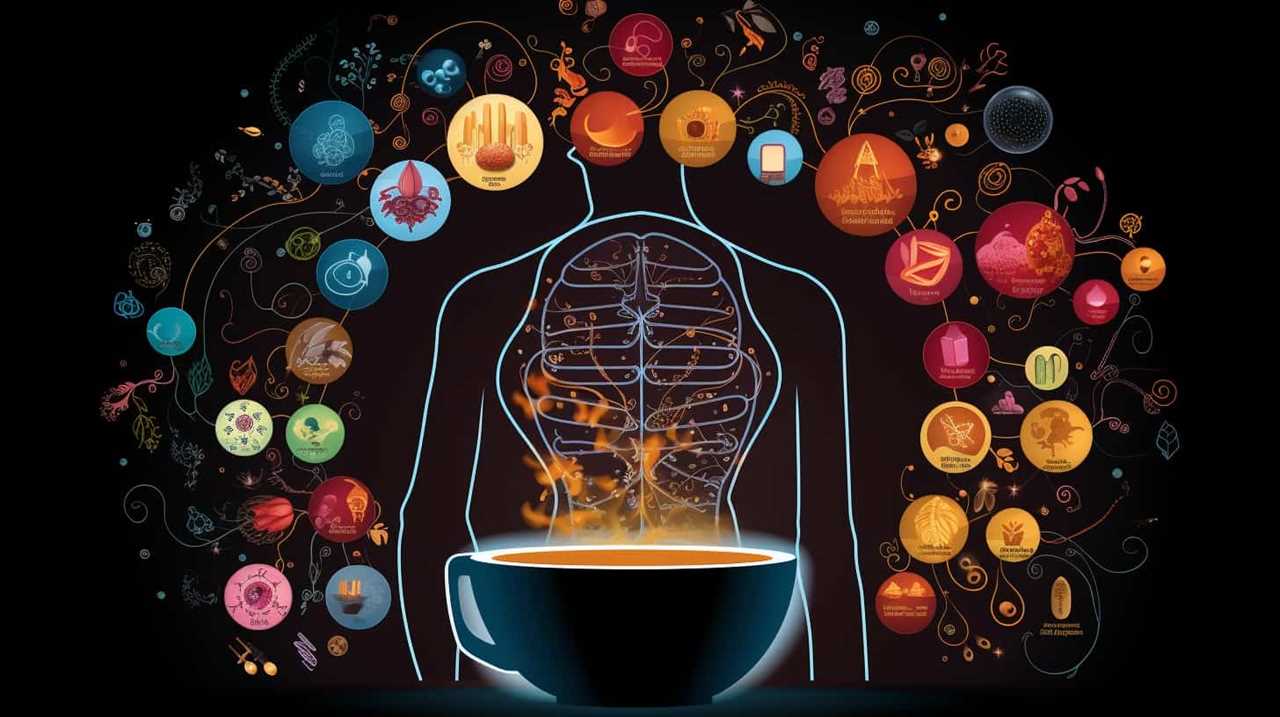
By choosing a high-quality coffee and controlling the amount of condensed milk added, one can still enjoy the rich taste of Vietnamese coffee while being mindful of their sugar consumption.
Justin is a seasoned author, coffee and tea enthusiast, and an essential member of the Cappuccino Oracle team. With a keen appreciation for the complexities of coffee, coffee alternatives, and tea, Justin has dedicated his professional career to exploring these realms and sharing his insights with readers worldwide.
Justin’s immersion in the world of coffee, coffee alternatives, and tea began at a young age, kindling a passion that extended beyond mere consumption. This love for these beverages led him to combine his talent for writing with his devotion to coffee and tea, bringing him to Cappuccino Oracle as a dedicated author.
-

 Coffee Basics5 days ago
Coffee Basics5 days agoThe Ultimate Guide To Buying Nespresso Pods: Where And How?
-

 Coffee Basics1 week ago
Coffee Basics1 week ago11 Best Medium Roast Coffees For Your Perfect Cup
-

 Coffee Basics1 week ago
Coffee Basics1 week agoStarbucks Venti Drinks: Customization And Pricing Guide
-

 Coffee Basics4 days ago
Coffee Basics4 days agoPerfect Your Espresso With Puck Screens: A Barista’s Secret
-

 Cappuccino Oracle Selected Reviews2 days ago
Cappuccino Oracle Selected Reviews2 days agoSmeg Knife Block Review Review [2024]
-

 Coffee Basics1 week ago
Coffee Basics1 week agoWhat Is Half-Caff Coffee? (And How Much Caffeine Is In It?)
-

 Coffee Basics1 week ago
Coffee Basics1 week ago9 Best Ground Coffee Brands For Your Perfect Cup
-

 Coffee Basics1 day ago
Coffee Basics1 day agoCan I Drink Coffee After Botox















